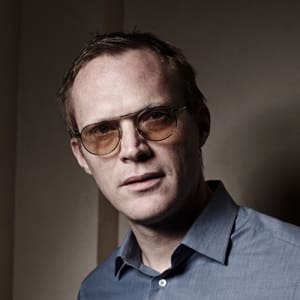
Eadweard Muybridge
Eadweard Muybridge’s photography of moving animals captured movement in a way that had never been done before. His work was used by both scientists and artists.
Synopsis
Hollywood couldn't have devised a more titillating scenario. Eadweard Muybridge, an eccentric inventor, was on the verge of a truly revolutionary discovery when his young wife had an affair. Muybridge killed the suitor in cold blood and was later acquitted on a verdict of "justifiable homicide." He resumed his work and developed a miraculous process for capturing movement on film, laying the groundwork for the motion picture industry.
Early Life
Edward James Muggeridge was born on April 9, 1830, to John and Susan Muggeridge of Kingston upon Thames, England. At age 20, he immigrated to America, first to New York, and then, in 1855, to San Francisco, where he established himself as a successful bookseller. Around this time, he also changed his surname to Muybridge, which he believed to be its original construction.
In 1860, while traveling to the East Coast en route to England, Muybridge received serious head injuries in a stagecoach accident. As a result, he suffered from double vision and confusion, and friends noticed a marked difference in his behavior. Studies by modern neurologists examining the medical records speculate that the injury to his frontal cortex might have led to some emotional and eccentric behavior later in his life.
After his convalescence, Muybridge returned to San Francisco and took up photography full-time. Under the pseudonym "Helios," he set out to record the scenery of the West with his mobile darkroom. He produced a wide array of panoramic landscape photographs, most famously of Yosemite Valley, and traveled to Alaska in 1868 to photograph the Tlingit people.
Photographic Discovery
As Muybridge's reputation as a photographer grew in the late 1800s, former California Governor Leland Stanford contacted him to help settle a bet. Speculation had raged for years over whether all four hooves of a running horse left the ground at the same time. Stanford believed they did, but the motion was too fast for the human eye to detect. In 1872, Muybridge began photographing a galloping horse in a sequence of shots. His initial findings appeared to indicate that Stanford was right, but due to imperfections in Muybridge's methods, it could not be confirmed with certainty.
With further funding from Stanford, however, Muybridge eventually devised a more complex method of photographing horses in motion and by 1879 had proven that they do at times have all four hooves off the ground during their running stride.
In 1883, Muybridge was invited to continue his research at the University of Pennsylvania and for the next few years produced thousands of photographs of humans and animals in motion. Near the end of his life, he published several books featuring his motion photographs and toured Europe and North America, presenting his photographic methods using a projection device he'd developed called the Zoopraxiscope.
Personal Life and Death
During a break from his photographic research in the 1870s, Muybridge took several photographic expeditions in and around California. On one of these, his wife, Flora, had an affair with Major Harry Larkyns, a drama critic. Believing that Larkyns had fathered the couple's recently born son, Muybridge tracked him down and shot and killed him. At his trial for murder in 1875, several witnesses testified that Muybridge's personality had changed after his stagecoach accident. The jury didn't buy the insanity defense, but acquitted Muybridge on the grounds of "justifiable homicide."
Muybridge died of prostate cancer on May 8, 1904, at his birthplace. His contributions to art and photography spurred the works of other inventors, including Thomas Edison and Étienne-Jules Marey. Muybridge's innovative camera techniques enabled people to see things otherwise too fast to comprehend, and his sequence images continue to inspire artists from other disciplines to this day.



